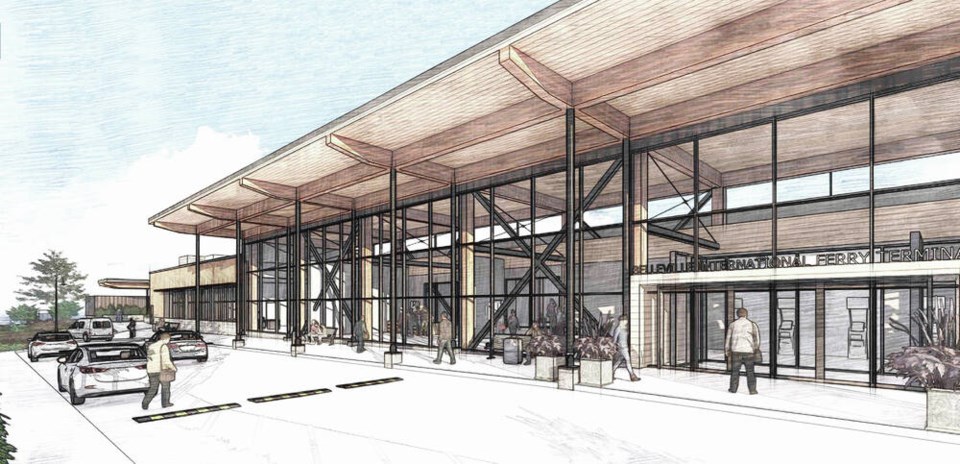The province may be ready to forge ahead with a re-imagining of the Belleville Street Terminal facility, but the companies that will use it need answers before they jump into any kind of long-term partnership.
The Ministry of Transportation and Infrastructure recently wrapped up a month-long public-engagement process, including an open house and survey, and said there was an “overall positive response” to the $220-million to $290-million plan for a new facility accommodating both the Clipper passenger ferry and Coho car ferry operations, along with the Canada Border Services Agency and U.S. Customs.
Currently, the Clipper and Coho, which travel from Victoria to Seattle and Port Angeles, respectively, operate from separate docks.
The existing Belleville Street facility no longer complies with the Canada-U.S. Land, Rail, Marine, and Air Transport Pre-clearance Agreement because it doesn’t have space for isolation rooms for questioning and searching of passengers heading to the U.S.
If that is not rectified, U.S. Customs and Border Protection could leave the Island, leading to possible shutdown or reductions in services like the Clipper and Coho, which could mean big tourism losses.
In 2019, the last full year before the pandemic, the facility processed just over 680,000 travellers, who generated an estimated $174 million in direct spending in the province.
The tenants of the proposed terminal — Black Ball Ferry and FRS Clipper — say they’re in favour of a new building but still need details about the impact any deal and disruption might have on their operations and bottom line, as well as their expected financial contribution and the tax implications.
“It can’t come at any cost,” said Black Ball president Ryan Burles.
The ministry said it aims to have the business case approved in the spring, noting feedback and submissions from Indigenous groups, the Songhees and Esquimalt First Nations and other stakeholders will shape the business case and contribute to the project design.
The ministry intends to publish a “What We Heard” report once feedback has been analyzed.
Early plans for the project suggest the facility will be no more than three storeys in height, with the second storey at street level.
There could be commercial opportunities along Belleville Street, space for passenger pick-up and drop-off, and pedestrian and other active-transportation facilities.
The province has said it would put the project out to tender next spring, in hopes construction would be complete by the end of 2027.
The first phase of construction, expected to begin next fall, would include building a temporary terminal inside the CPR Steamship Terminal Building to house the Clipper and U.S. Customs and Border Protection.
The Coho and Canada Border Services Agency would continue to use the existing Coho terminal building during construction.
The second phase of construction, to begin immediately following the first phase, would include demolishing the Clipper terminal, creating a new pre-clearance terminal building, replacing the wharf, and construction of a commercial-goods-processing facility and terminal building using mass-timber components.
The province is hoping Ottawa will provide half the construction cost.



